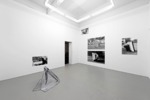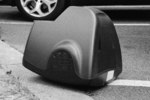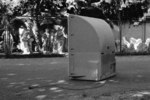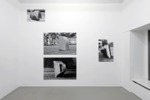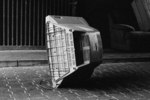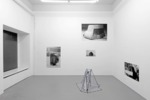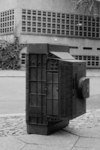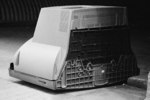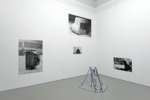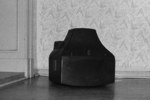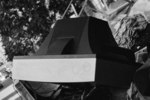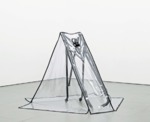„Auf der Suche nach der Welt von morgen“
Die Medienlandschaft ist in rapidem Wandel begriffen: Es vervielfältigen sich die glitzernden Oberflächen, in denen die Welt sich zerrspiegelt; ebenso die Höhlen, deren Bewohnerinnen, von Rundumton begleitet, auf hochaufgelöste Schattenspiele starren. Die Blogosphäre dehnt sich aus und zieht sich wieder zusammen; in den Wipfeln und von Tauern zwitschern gelbe Vögel schräge Weisen, während die weitere Fauna (wahlweise) Applaus oder Hohn spendet oder Däumchen dreht (auf oder ab). Auch um einige fließende Gewässer – Ströme (streams) und Sturzbäche (torrents) – ist die mediale Umwelt reicher geworden. Sie geben der Oberfläche ein neues Antlitz oder führen subterran zu Umwälzungen und neuen Sedimentierungen. In der Geomorphologie spricht man von „Archiven“.
Weiteres Symptom der Transformation: Gewisse mediale Arten werden aus ihrem natürlichen Habitat vertrieben. Aus den Wohnzimmern, in denen ehemals die Röhren blühten und mit ihren matten Scheiben Familiengesichter bunt beleuchteten oder mit ihren Geräuschen den Insassen Bügelrhythmen vorgaben, werden sie von größeren Flachgewächsen, mobilen Schirmen und Abstrahlkisten verdrängt. Die Röhren wandern nach draußen und sprießen an Straßenecken, auf Plätzen und Höfen. Traurig neigen sie dort ihre Mattscheiben gen Boden, drehen sich weg, bieten uns ihre sonst verborgenen Unter- und Hinterteile dar („Kisten“, hieß es früher despektierlich). Sie recken Stellen der Sonne und dem Regen entgegen, die sie ehedem voller Scham versteckten. Warum nur?
Wie die Aufnahmen belegen, die uns Christin Kaiser in großformatigen Abzügen präsentiert, sind auch die eigentlich abseitigen Oberflächen von faszinierenden Strukturen geschmückt. Feine Äderchen, Aussparungen und Poren, mit denen die Röhren ihre Sauerstoffzufuhr organisieren und thermostativ ihre Temperatur regulieren. Kunstvoll arrangierte Schlitze in idealharmonischer Symmetrie – Formvollendung.
Manchmal versuchen die Röhren ihre ornamentalen Figurationen (noch etwas unbeholfen) als Mimikry an Häuserfassaden zu nutzen (Röhre 8), offenbar bemüht um visuelle Assimilation, um den Blicken der Jäger, Sammler und Unkrautvernichter zu entgehen, denen das Stadtbild nicht klinisch betoniert genug sein kann. Denn den Röhren wird ohne Rücksicht begegnet; es handelt sich um eine scheinbar nutzlose, sicher schutzlose, vom Aussterben bedrohte Art. Ihre Eroberung urbaner Räume ist auf Zeit gestellt, vereinzeltes Aufbäumen, stille Demonstration. Sie sind Menetekel einer verstörten Welt, deren mediale Morphologie, Pixel potenzierend, wie irre nach vorne stürmt, vergangene Gerätschaften unter sich begrabend, deren Bergung einer zukünftigen Archäologie anheimstellend. Die Röhren gemahnen uns an die häusliche Wärme, die sie einst spendeten, an das gemütliche Blau, mit dem zu jeder Jahreszeit pünktlich um acht der Abend eingeläutet wurde. Oder daran, dass sie bisweilen als Abstellfläche für Getränke missbraucht werden konnten, wenn der Kampf um die Fernbedienung mit nur einer Hand nicht zu gewinnen und nüchtern der Anblick der Weltlage kaum zu ertragen war (Röhre 2).
Andere Röhren spielen wie befreit auf. Jetzt müssen sie nicht mehr funktionieren. Aus der Ecke, in die man sie gestellte hatte, und aus der miefigen Häuslichkeit entlassen, führen sie gewagte Tänzchen auf, rücken sich ins Licht, werfen sich in Pose. Doch sind dies Tänze am Abgrund, auf der Schwelle zur schönen neuen Welt von morgen, die keinen Platz mehr für sie kennt. Eine Welt ohne Röhren, eine flache Welt.
Guido Kirsten
„Auf der Suche nach der Welt von morgen“
The media landscape is understood in rapid change: Distorted the world reflects back from the sparkling surfaces, as they manifold themselves; as are the caves, their inhabitants, accompanied from encompassing sounds, staring at high definition galanty shows. The blogosphere stretches out and pulls itself together again; in the treetops and from the tauern, yellow birds twitter skewed melodies, whilst the surrounding fauna (electively) bestow their applause or scorn, turn their thumb (up or down). Even around certain flowing waters - streams and torrents - the medial environment gains richer. They give the surface a new face, or
subterraneously lead to upheaval and new sedimentations. In geomorphology one speaks of
“archives”.
Further symptoms of transformation: certain medial kinds are expelled from their habitat. From the living rooms in which once the the tubes bloomed, family faces colorfully lit by their matt screens, or their noises purporting rhythms to the inmates, are they now driven out by bigger foliage, mobile screens and radiation boxes. The tubes wander outside and spring out on street corners, in squares and in yards. Sad they bow their matt screens to the ground, turn away, present us with their otherwise hidden bottom and rear parts (“boxes”, it used to be called disrespectfully). They stretch up towards the sun and the rain, from which they formerly
shamefully hid. But why?
As Christin Kaiser’s large format photographic prints show us, are also the remote surfaces decorated with fascinating structures. Fine veins, notches and pores, with which the tubes organize their oxygen supply and thermostatically regulate their temperatures. Skillfully arranged slits in ideal harmonical symmetry - perfection.
Sometimes the tubes try to use their ornamental figurations (still somewhat awkward) as mimicry on house facades (Röhre 8), obviously striving for visual assimilation, to evade the looks of the hunter, the gatherer and the weedkiller, whose cityscape cannot be clinically concreted enough. Because the tubes are encountered without consideration; it is a matter of an ostensibly useless species, certainly defenceless and threatened with extinction. Their conquest of urban spaces is temporary, isolated rebellion, mute demonstration. They are the warnings of a disturbed world, whose medial morphology, pixel potentiating, madly storming forward, burying past devices beneath them, leaving their salvage to a future archeology. The tubes remind us of the domestic warmth they once afforded us, of the cosy blue, with which the evening was punctually rung in, eight o’clock all year round. Or of the fact that they could be abused for their carrying capacities, when the battle for the remote control no longer could be won with one hand alone and the state of affairs sober hard to bear. (Röhre 2).
Other tubes play as if liberated. Now they don’t have to function anymore. Now dismissed from the corner in which they were put, dismissed from their musty domestic life, they perform daring little dances, slide into the light, throw themselves into pose. But these are dances on the edge, on the threshold of the beautiful new world of tomorrow, which knows no place for them anymore. A world without tubes, a flat world.
Guido Kirsten, translated by Rasmus Kjelsrud
Auf der Suche nach der Welt von morgen
Surprised by summer the decision to finish our prayers early still didn’t come easy to all of us, oh make no mistake it was not the first
time feeling overtook our silence, nor had we not seen spring, but beginnings were still supposed to have endings, albeit worlds now latently dwelling in the comfort of hyperlink strings. Where do
you want to go today?
What was waiting, stirring, in technological growth, was of course the digital connection, not the plastic, it was easy to say now as the
shackled chains already cluttered the floor beneath us, as a brief history of the subject came to en end.
When we think about this future, we tend to think about a world inhabited with beings similar to ourselves. But like water survives all fury
of fire, will dies with no cell, like the actions of my hands don’t belong to me, the sun rose long before you woke and will set in the cosmic ages as well.
But that was back when the bringer of worlds still served without transitory verbs under its carcass. Back when lying didn’t always go too
far, when place meant pilgrims, and silicone was mined by men. At least we inherited their values. Not that melancholy is justified, it never is, a past in tense is a past no less.
In a past where no woman no man ever split the atoms of the water they drunk, human pearls on a string of wet. A place (like home) leaves
its site and gains never more, its alliance with the fields of its yet.
So where do you want to go today? Only a withering ideal of doubt. The genealogy of our dreams is no less real than is the gloom of
accepting its passe. But with or without our stories new realities must come, carrying novel genealogical performance, albeit summoned by you here now. And as summer moved on this time, our
prayers were left behind, hyperlinks entangled in plastic and earthly metals no more, meaning finally omnipresently assigned.
Rasmus Kjelsrud

